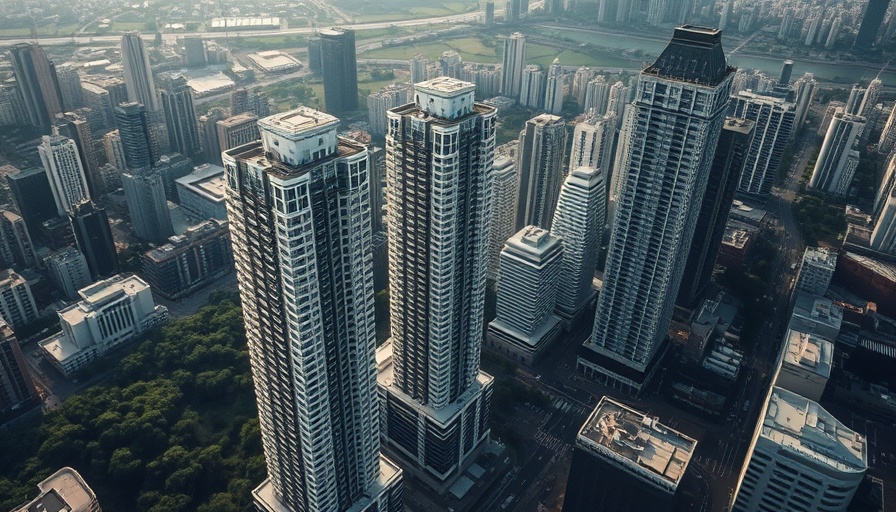
A New Horizon for Downtown L.A.: The Coming Skyscraper
Los Angeles is undergoing significant changes in its urban landscape, and a notable highlight is the proposed residential skyscraper poised to rise above The Bloc, a vibrant mixed-use complex in downtown L.A. This project has recently cleared a major regulatory hurdle, marking a pivotal moment in the city's ongoing urban development.
Transforming Urban Living
The planned tower will stand at 53 stories tall, making it one of the tallest buildings in Los Angeles. This ambitious residential project will feature 466 units, offering a diverse range of housing options, with studios, one, two, and even three-bedroom units designed to cater to the needs of a growing urban population. The Bloc will not only become a haven for potential homeowners but also signifies a shift towards more integrated urban living, where housing includes easy access to dining, shopping, and entertainment.
The Bloc: From Decline to Renaissance
The Bloc has an interesting history that reflects the changing dynamics of downtown L.A. Originally opened in the early 1970s as an upscale indoor shopping mall, it has since struggled with relevance in an evolving environment. The mall had become dated by the time of its 2013 sale but has experienced a renaissance spurred by the vision of developers like Wayne Ratkovich, who initiated extensive renovations to modernize the space.
Such transformations are crucial in responding to urban pressures, including housing shortages and the increasing demand for more dynamic public spaces. The addition of the new skyscraper on top of the existing parking garage exemplifies innovative urban solutions that prioritize high-density living while making the most of limited land.
Addressing Housing Needs and Community Growth
The push for new residential spaces in urban settings like downtown L.A. arises from pressing housing shortages and rising living costs. As California continues to grapple with these challenges, projects like the skyscraper at The Bloc are essential to meeting housing demand while providing modern amenities that reflect the needs of today’s residents.
This development offers potential solutions to the affordability crisis facing many urban dwellers, particularly young professionals and families looking to establish their roots in a vibrant community.
Future Trends in City Development
As more urban spaces pursue high-rise residential towers, we can expect to see shifts in how communities are designed and built. Emphasizing vertical living is a practical response to California’s growing population and a need for sustainable building practices. Integrated developments that combine commercial and residential spaces will likely become the norm, encouraging living arrangements where community connection is prioritized.
Additionally, with features like improved public transportation access—evidenced by the complex's connection to the 7th Street/Metro Center light-rail station—developers are recognizing the importance of supporting sustainable transit options that reduce reliance on cars and contribute to a more eco-friendly environment.
Evaluating Risks and Opportunities
While the new skyscraper presents numerous opportunities for homeowners and the surrounding community, it also comes with challenges. Concerns regarding construction costs, regulatory hurdles, and the local impact on traffic patterns must be addressed to ensure the success of this ambitious project.
Encouraging dialogue among community members, city planners, and developers will be essential for fostering a collaborative environment that considers the diverse needs and perspectives of all stakeholders. Effective communication may help mitigate opposition and encourage support for innovative urban housing solutions.
Conclusion: Embrace the Change
The impending construction of the residential skyscraper at The Bloc symbolizes more than just a new building; it embodies the future of urban living in Los Angeles, where adaptability and innovation are key to addressing housing shortages and enhancing community life. As we watch this development proceed, it’s crucial for potential homeowners and residents to stay informed about how these changes could impact their neighborhoods. For those interested in securing a place in the heart of downtown L.A., this new building provides an exciting opportunity to be part of a new community trend that will shape the city for years to come.
 Add Row
Add Row  Add
Add 




Write A Comment